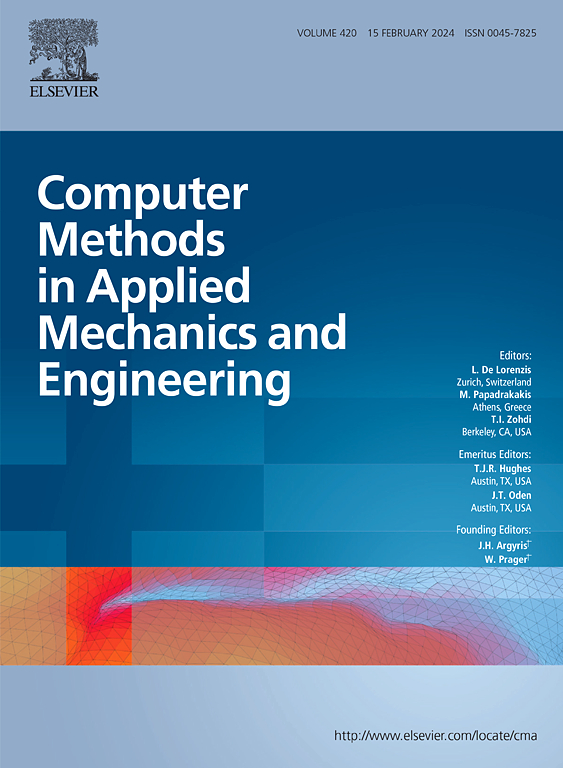Cross-talk effects in trimmed isogeometric shells and the control point duplication approach
IF 6.9
1区 工程技术
Q1 ENGINEERING, MULTIDISCIPLINARY
Computer Methods in Applied Mechanics and Engineering
Pub Date : 2025-02-24
DOI:10.1016/j.cma.2025.117849
引用次数: 0
Abstract
Finite element and isogeometric methods with non-boundary-conforming meshes, also known as immersed, embedding or trimming approaches, offer a fast and simple model generation process and thus became an attractive alternative to conventional boundary-fitted methods. One challenge inherent to these methods is the accurate modeling of discontinuities, such as small, narrow trimming features and cracks. Such discontinuities can split the support domain of a basis function into multiple disjoint regions, leading to a spurious mechanical coupling between physically separated material regions, which may compromise the predictive quality of the simulation model. Isogeometric Analysis (IGA), with its higher-order and higher-continuity spline bases possessing larger support domains, is even more prone to such spurious effects. This phenomenon is known as ”cross-talk”, and can be solved via adequate (local) mesh refinement, as shown by Coradello et al. [Computational Mechanics 66 (2020): 431-447]. However, the focus of our work is on explicit dynamics such as crash simulations. In such cases, mesh refinement is unfavorable because it halves the critical time step size for each level of -refinement, and therefore substantially increases the computational cost.
To this end, we propose an effective and efficient control point duplication (CPD) approach that mitigates the effects of cross-talk caused by narrow trimming features, while maintaining the feasible critical time step size in explicit dynamic analysis. CPD locally decouples the disjoint material regions by duplicating certain control points and modifying the connectivity of the affected elements. Furthermore, since cross-talk has only received limited attention in the literature, we also present a systematic study to elaborate on its characteristics and mechanisms. Following this, we provide a formal mathematical definition, a classification criterion, as well as a detection method for cross-talk in trimmed NURBS shells. Finally, we demonstrate the efficiency and effectiveness of the CPD approach through four numerical examples with varying complexities. We also show that CPD is not limited to explicit dynamics and that apart from narrow trimming features, it can potentially also mitigate cross-talk caused by element erosion and sharp crack interfaces.
求助全文
约1分钟内获得全文
求助全文
来源期刊
CiteScore
12.70
自引率
15.30%
发文量
719
审稿时长
44 days
期刊介绍:
Computer Methods in Applied Mechanics and Engineering stands as a cornerstone in the realm of computational science and engineering. With a history spanning over five decades, the journal has been a key platform for disseminating papers on advanced mathematical modeling and numerical solutions. Interdisciplinary in nature, these contributions encompass mechanics, mathematics, computer science, and various scientific disciplines. The journal welcomes a broad range of computational methods addressing the simulation, analysis, and design of complex physical problems, making it a vital resource for researchers in the field.

 求助内容:
求助内容: 应助结果提醒方式:
应助结果提醒方式:


